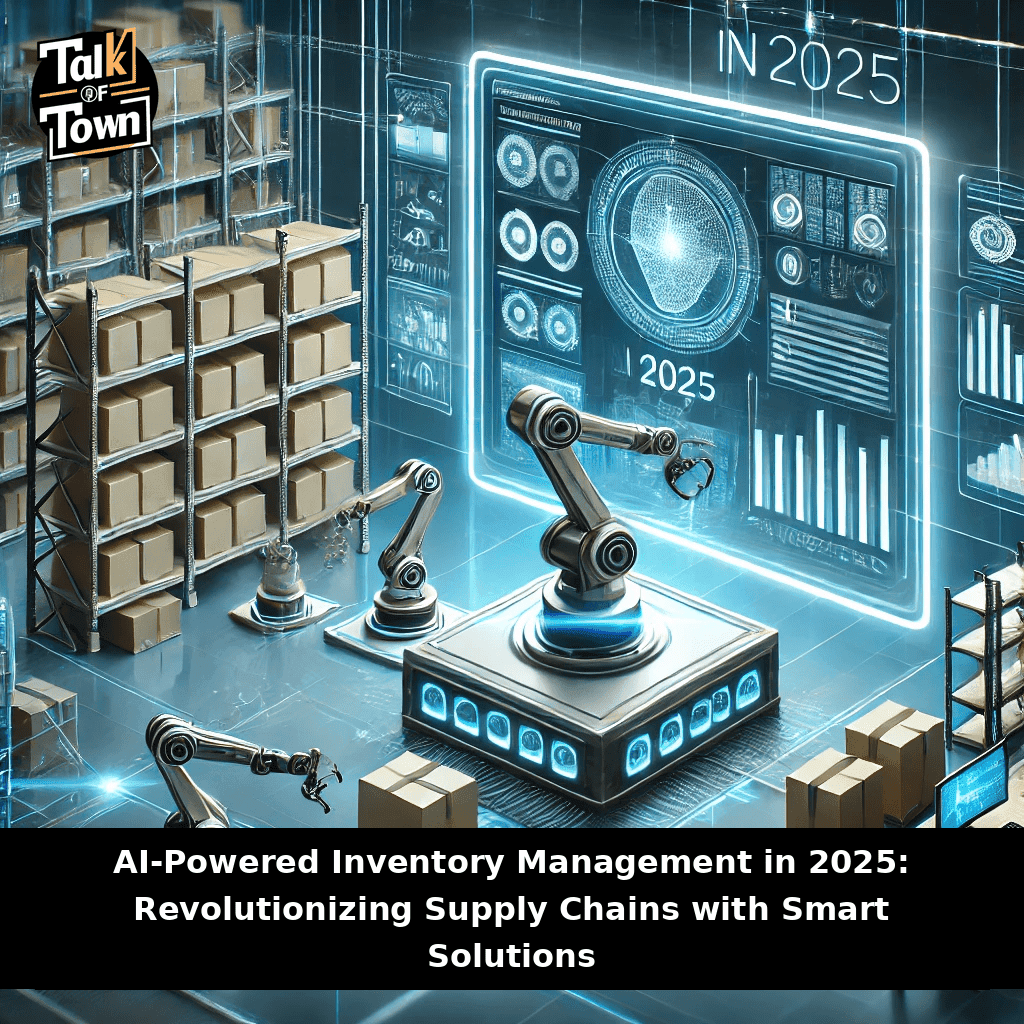- February 14, 2025
AI-Powered Inventory Management in 2025

Introduction
In 2025, businesses face unprecedented challenges in managing inventory due to volatile demand, complex global supply chains, and rising customer expectations. Traditional methods, reliant on manual processes and static forecasting, struggle to keep pace. Enter AI-powered inventory management—a game-changer that leverages machine learning, predictive analytics, and automation to deliver real-time insights, minimize waste, and maximize profitability. This blog explores how AI is reshaping inventory management, its core technologies, real-world applications, and the tools driving this revolution.
Why AI-Powered Inventory Management?
AI addresses critical pain points in inventory management:
- Demand Volatility: AI analyzes historical data, market trends, and external factors (e.g., weather, social media trends) to predict demand with 90%+ accuracy 111.
- Overstocking/Stockouts: Reduces excess inventory costs by 25% and stockouts by 30% through dynamic replenishment 59.
- Operational Efficiency: Automates tasks like order processing, supplier communication, and anomaly detection, saving 15–20 hours/week 313.
Core Technologies Behind AI-Powered Inventory Management
- Machine Learning (ML)
- Demand Forecasting: ML algorithms analyze sales data, seasonality, and economic indicators to predict future needs (e.g., Walmart’s “Eden” system) 911.
- Anomaly Detection: Flags discrepancies like sudden stockouts or supplier delays in real time 13.
- Predictive Analytics
- Integrates data from IoT sensors, RFID tags, and ERP systems to optimize stock allocation and reduce holding costs 513.
- Computer Vision
- Automates stock counting via drones or cameras, reducing manual errors by 40% 13.
- Example: Coca-Cola uses AI to track product movement in warehouses 9.
- Natural Language Processing (NLP)
- Streamlines supplier negotiations and automates purchase orders by analyzing emails and contracts 13.
Must Read: Top 10 AI Tools for Solo Entrepreneurs in 2025: Boost Productivity and Scale Your Business
Key Benefits of AI-Powered Inventory Management
- Cost Reduction: Lowers inventory holding costs by 20–30% through optimized stock levels.
- Real-Time Visibility: Tracks inventory across global warehouses, retail outlets, and e-commerce platforms.
- Enhanced Customer Satisfaction: Ensures product availability (e.g., Amazon’s 1-day delivery powered by Kiva robots).
- Scalability: Adapts to business growth, handling multi-location and omnichannel inventory seamlessly.
Top 5 AI-Powered Inventory Management Tools for 2025
- ClickUp
- Features: AI-driven demand forecasting, automated replenishment, and real-time dashboards.
- Pricing: Starts at $7/month (Free plan available).
- Best For: SMEs needing collaboration and task automation.
- Zoho Inventory
- Features: Barcode/RFID tracking, multi-currency support, and low-stock alerts.
- Pricing: 29–29–299/month.
- Best For: Small businesses in retail and e-commerce.
- Cin7
- Features: Integrates with 700+ platforms (e.g., Shopify), 3PL support, and batch tracking.
- Pricing: 349–349–999/month.
- Best For: Mid-sized businesses with complex supply chains.
- Infor Warehouse Management System (WMS)
- Features: 3D visualization, labor management, and IoT integration.
- Pricing: Custom.
- Best For: Large enterprises requiring advanced warehouse optimization.
- IBM Supply Chain
- Features: End-to-end visibility, blockchain integration, and risk mitigation.
- Pricing: Enterprise-level (custom quotes).
- Best For: Global corporations managing cross-border logistics.
Real-World Success Stories
- Amazon’s Kiva Robots
- Impact: Reduced order fulfillment time by 50% and operational costs by 20%.
- How: AI-powered robots navigate warehouses, optimizing picking routes and stock placement.
- Walmart’s Demand Forecasting
- Impact: Cut overstock by 16% and improved in-store product availability.
- How: ML algorithms analyze weather data and local events to adjust stock levels.
- L’Oréal’s Supply Chain 4.0
- Impact: Reduced transportation costs by 15% and stockouts by 25%.
- How: AI predicts global demand patterns and automates production schedules.
Implementation Steps for Businesses
- Audit Current Systems: Identify gaps in demand forecasting, stock tracking, and supplier coordination.
- Choose the Right Tool: Match tools to business size and needs (e.g., ClickUp for SMEs, IBM for enterprises).
- Integrate Data Sources: Connect ERP, POS, and IoT devices for unified insights.
- Train Teams: Educate staff on AI tools and data-driven decision-making.
- Monitor & Optimize: Use KPIs like MAPE (Mean Absolute Percentage Error) to refine AI models.
Challenges & Solutions
- Data Quality Issues
- Solution: Implement data governance policies and clean datasets before AI training.
- Resistance to Change
- Solution: Pilot AI tools in one department (e.g., warehouse) and showcase ROI to stakeholders.
- High Initial Costs
- Solution: Start with affordable SaaS tools (e.g., Zoho Inventory) and scale gradually.
Future Trends in AI-Powered Inventory Management
- Autonomous Supply Chains: Self-adjusting systems with minimal human input.
- AI + Blockchain: Secure, transparent tracking of goods from factory to consumer.
- Hyper-Personalization: AI predicts micro-demand trends for niche customer segments.
Conclusion
AI-powered inventory management is no longer optional—it’s a competitive necessity in 2025. By adopting tools like ClickUp, Cin7, or IBM Supply Chain, businesses can slash costs, eliminate stockouts, and deliver seamless customer experiences. As technologies like machine learning and IoT evolve, the future promises even greater efficiency and innovation. Start your AI journey today to stay ahead in the fast-paced world of supply chain management!

